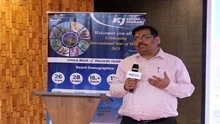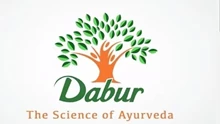
Dr. Abhilaksh Likhi, Secretary of the Department of Fisheries, made a visit to Shrimp Farms in Lahli village, Rohtak, and the Regional Centre of ICAR-CIFE in Rohtak, Haryana. This visit aimed to address the challenges faced by saline water shrimp farmers and promote sustainable aquafarming practices.
During his visit to the ICAR-CIFE farm facilities, Dr. Abhilaksh Likhi engaged in a meaningful dialogue with shrimp farmers from Haryana to gain insights into the grassroots issues they encounter. As part of the visit, the Union Secretary also distributed pedigreed common carp seed produced by the Centre under the NAHEP scheme to select farmers, encouraging species diversification in saline water aquaculture.
Dr. Likhi stressed the importance of transforming wasteland into a resource through aquafarming. He was informed by ICAR-CIFE scientists that the salinization of groundwater in inland states, such as Haryana, Punjab, Rajasthan, and Uttar Pradesh, has led to significant economic, social, and environmental repercussions, affecting approximately 8.62 million hectares of land. However, this challenge also presents an opportunity, as saline groundwater can be effectively utilized for aquaculture, allowing for the cultivation of income-generating fish, prawn, and shrimp crops while helping alleviate the impact of salinity.
Presently, the four northern Indian states of Haryana, Punjab, Rajasthan, and Uttar Pradesh produce 8554.15 metric tons of shrimp annually from 2167 hectares of saline water aquaculture. However, these states possess a staggering 58,000 hectares of suitable land for saline water aquaculture, suggesting immense potential for shrimp and fish farming. To promote species diversification in these areas, the Department of Fisheries has approved a project under PMMSY to CIFE, Rohtak, for the Genetic Improvement of Common Carp (Cyprinus carpio) for Inland Saline Aquaculture, with a total investment of Rs. 9.29 Crore.
Dr. Abhilaksh Likhi also conducted a thorough review of the activities undertaken by the ICAR-Central Institute of Fisheries Education (CIFE), Rohtak, including the genetic improvement program of common carp supported under PMMSY. Dr. S. Jaageerdar, Principal Scientist at ICAR, provided insights into the various projects and initiatives being carried out at the Rohtak Centre. Dr. Babita Rani, Senior Scientist and Scientist in-Charge of CIFE, Rohtak, presented a detailed overview of the research activities undertaken at the Centre.
The In-Charge of CIFE, Rohtak, informed that ICAR-CIFE has developed technology to fortify deficient ions in inland saline water, making it suitable for shrimp and other species of aquaculture. This technology has been extended to approximately 2942 acres in Haryana, 1200 acres in Punjab, 1000 acres in Rajasthan, and 20-25 acres in Uttar Pradesh. The area of production in Haryana has seen an additional increase of 1200 acres this year.
Dr. Abhilaksh Likhi commended the scientists at ICAR-CIFE for their groundbreaking work in fortifying deficient ions in inland saline water, rendering it conducive for shrimp farming. He emphasized the need to raise awareness about adopting this technology in Haryana, Uttar Pradesh, Rajasthan, and Punjab.
Furthermore, he underscored the importance of expanding shrimp farming with the technology developed by ICAR-CIFE in all four states, which collectively possess approximately 58,000 hectares of suitable land for saline water aquaculture, yet currently utilize only 2,167 hectares, yielding 8,554.15 metric tons annually.











